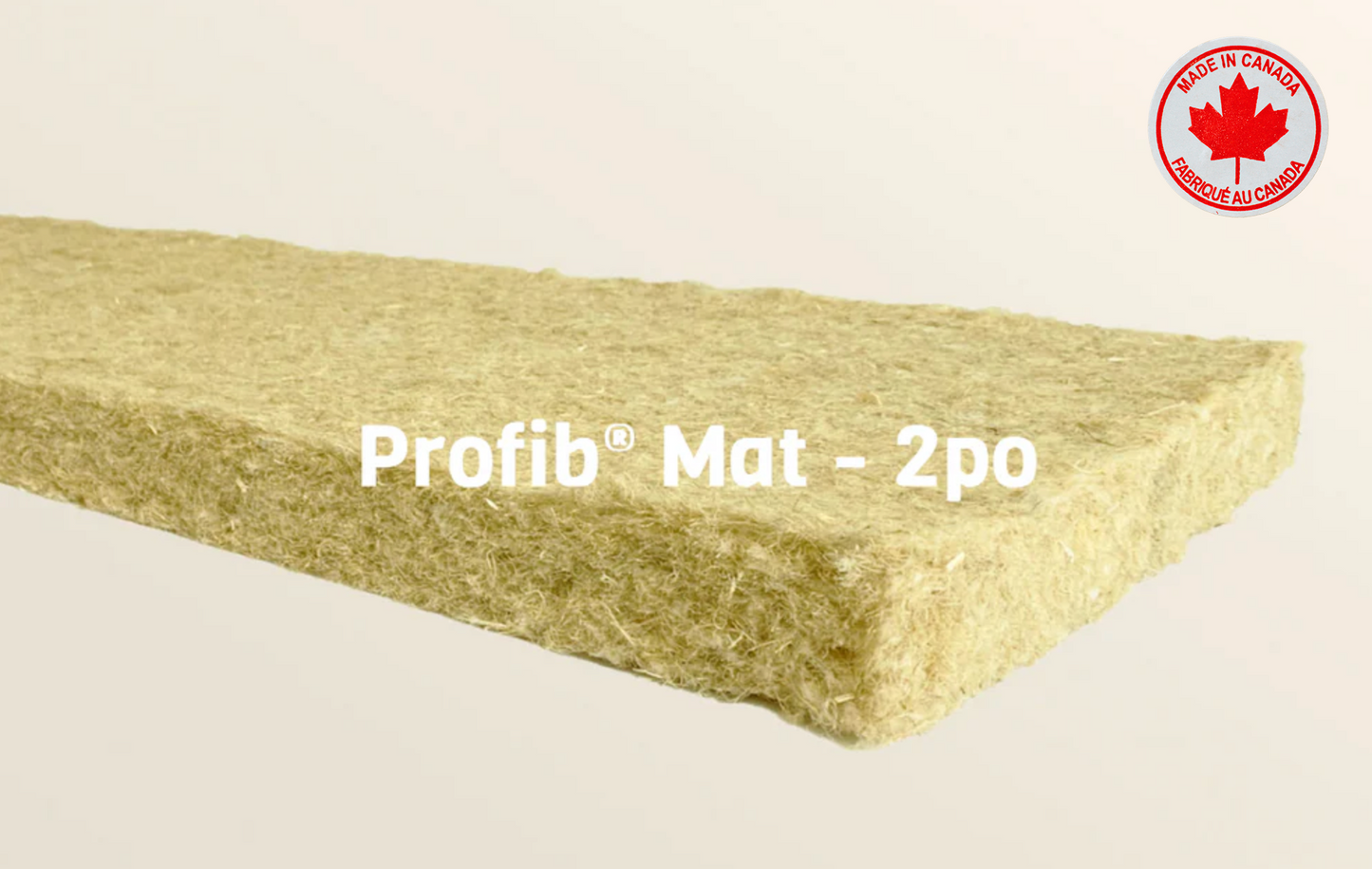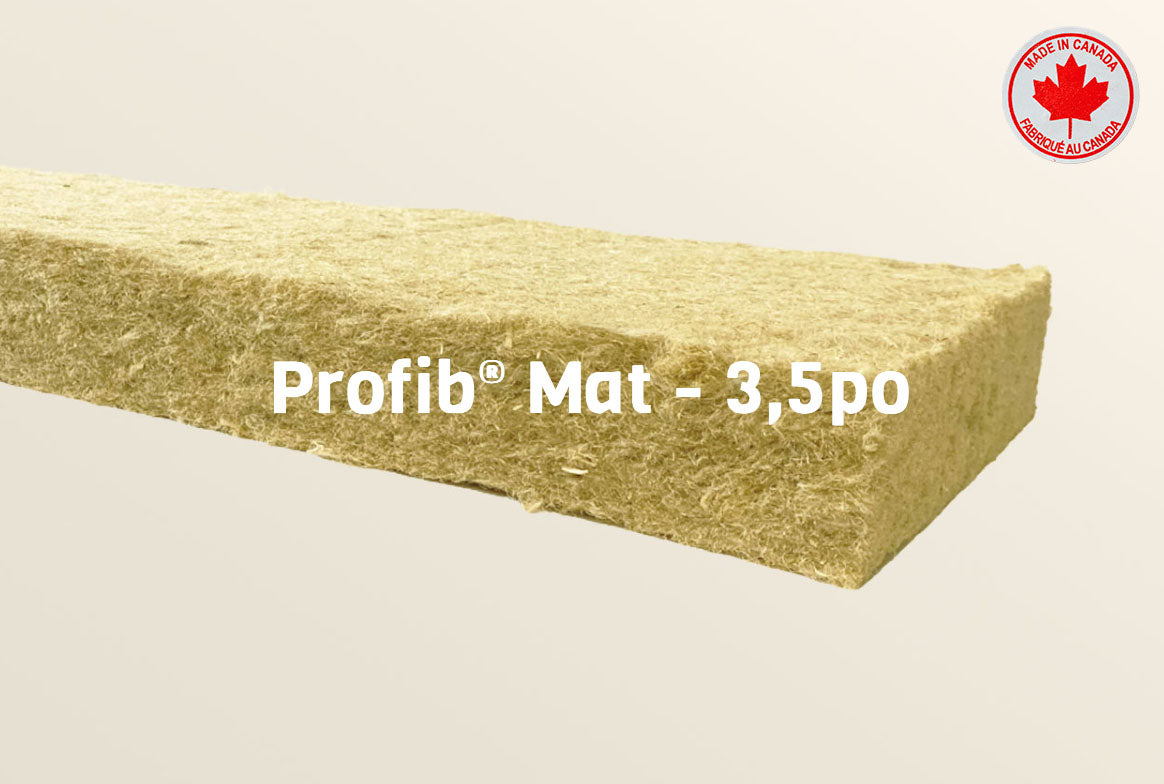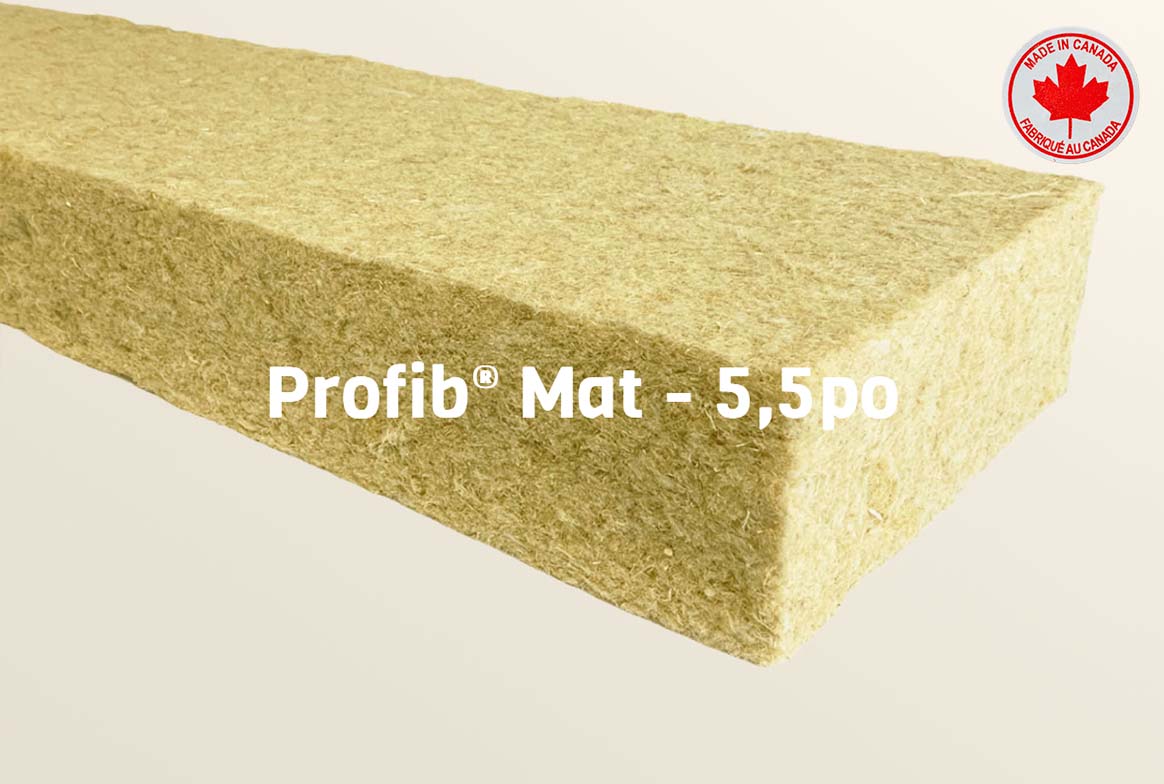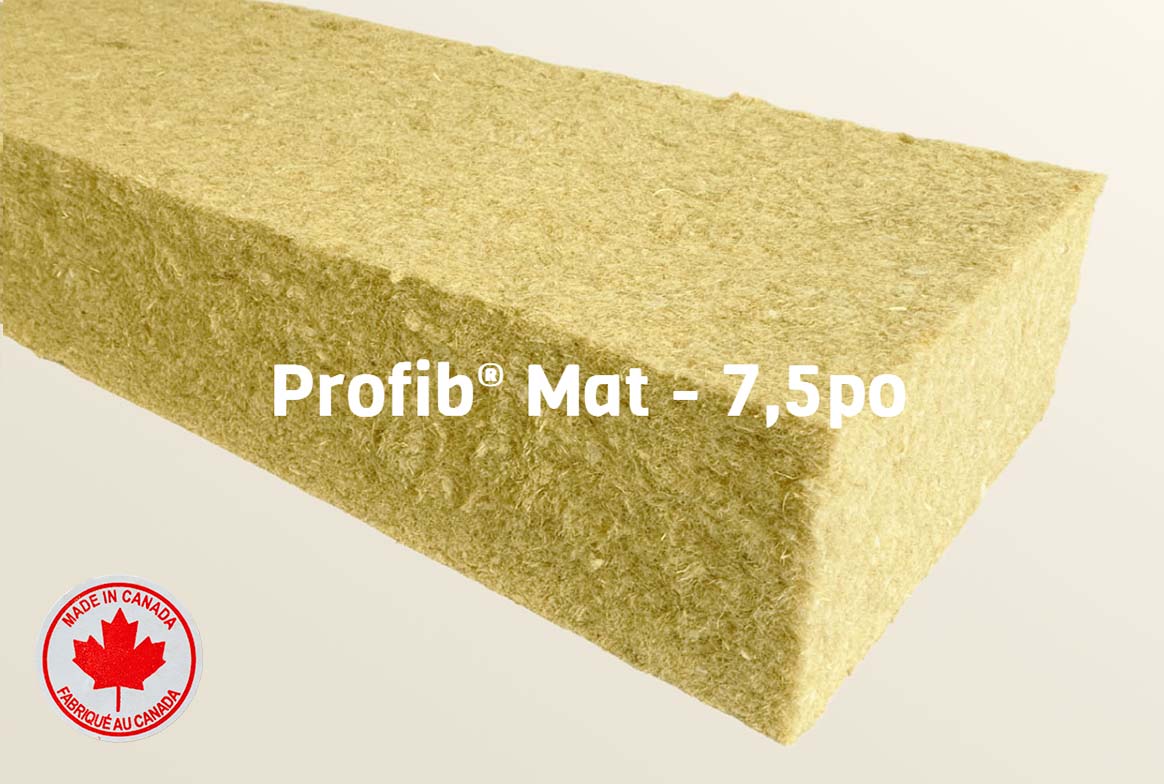



-
Applications for all your projects
- Exterior walls
- Ceilings
- Attics
- Roof trusses
- Interior walls (soundproofing)
-
Performance
-
Résistance et inertie thermique
-
Résistant au feu IPF 255 IDF 30
-
Non irritant et non toxique
-
Biosourcé et renouvelable
Potentiel de réchauffement climatique : 0.68 kg éq.CO₂/m²
Carbone biogénique :-1.6 kg éq.CO₂/m² -
-
Our prices
2.0in at $1.20 sq. ft.
3.5in at $1.64 sq. ft.
5.5in at $2.42 sq. ft.
7.5in at $3.27 sq. ft.
Downloads
➡️ Technical sheet
➡️ Installation Guide
➡️ Environmental technical sheet
To learn more about these products, contact us today here!
Vidéo
FAQ: Hemp Wool Insulation
What is hemp wool? How is it different from other natural insulators?
Hemp wool is an insulation material made from industrial hemp fibers. Unlike other natural insulators like wood fiber, cellulose, or sheep's wool, hemp stands out for its excellent resistance to moisture and mold. It is also known for its durability and low environmental impact since hemp cultivation requires minimal water and fertilizer and helps in capturing CO₂.
Does hemp wool insulate well?
Yes, hemp wool insulates as effectively as other insulators. Its R-value is between 3.5 to 4 per inch of thickness, comparable to other natural or mineral insulators. This performance can vary depending on the density and manufacturing process of the hemp panels or batts. In practice, it meets the requirements for green building while providing thermal comfort comparable to conventional insulators.
Is hemp wool susceptible to mold or insects?
No, when installed correctly, hemp wool is not particularly vulnerable to mold or insect infestations. Hemp has natural antibacterial properties and regulates moisture. Moreover, if the insulation is protected by an adequate air/vapor barrier or a smart membrane, the risk of mold development is significantly reduced.
What kind of tools are needed to cut and install hemp wool?
Hemp panels or batts are typically cut with simple tools like a hand saw or a circular saw with an appropriate blade. The installation involves carefully adjusting the panels between the framing members to prevent thermal bridging. It is recommended to wear a dust mask and safety glasses during cutting, although hemp fiber is considerably less irritating than fiberglass.
Should a vapor barrier or smart membrane be used with hemp wool?
In most cases, the use of an air/vapor barrier or a smart membrane is strongly recommended to ensure proper moisture control within the wall. Hemp wool is hygroscopic, meaning it can absorb and release moisture, which is beneficial for indoor air quality. However, correct installation and the right choice of membrane are essential to maintain thermal performance and protect the structure from any condensation risks.
What is the lifespan of hemp wool?
If properly installed and protected from water infiltration and mechanical damage, hemp wool can last as long as the building's structure, if not longer. Its lifecycle is closely tied to the building's envelope: as long as the membrane or protective coating remains watertight and there are no moisture issues, hemp wool will retain its insulating properties for several decades.
Is hemp wool really eco-friendly?
Yes. In addition to being a bio-based insulator, hemp cultivation actively contributes to soil regeneration and requires very few chemical inputs. Hemp is a fast-growing plant that captures significant amounts of CO₂, thus reducing its carbon footprint.\nFurthermore, converting hemp fiber into insulation consumes less energy than many synthetic insulators, making it an excellent choice for eco-friendly construction or renovation projects."}]}]}
Does hemp wool effectively block noise?
Yes, hemp wool is good at absorbing sound, particularly airborne noises. It helps create more comfortable and quiet interior spaces, especially in urban environments or settings where noise control is crucial (e.g., open-plan homes, studios, etc.).
Can hemp wool be mixed with other insulators?
Yes, hemp wool can be combined with other natural insulators (wood fiber, cellulose) or more traditional ones (mineral wool, rigid foam). The combinations often depend on thermal, acoustic, and moisture management goals, as well as architectural constraints. It is important to adhere to the principles of vapor diffusion and air tightness to avoid any condensation issues.
Where can I buy hemp wool, and is it possible to see it before purchasing?
If you want to see and feel the product before buying, you can visit our premises or warehouse. A consultant will answer your questions and help you choose the right insulator. For more information on our products, contact us today!




